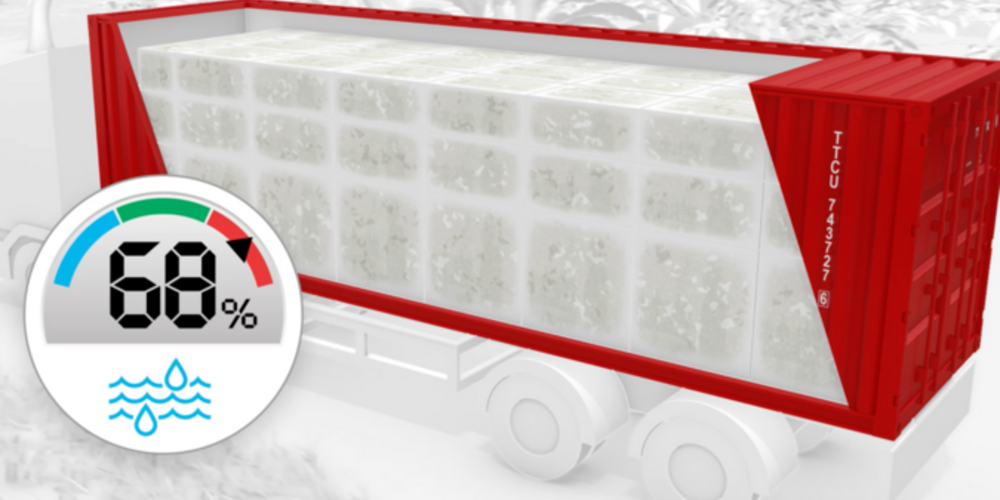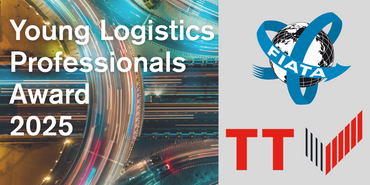TT Talk - Managing climatic risks in the logistics supply chain

Global trade requires goods to circumnavigate the globe through different climatic zones, predominantly involving sea carriage. The standard general purpose freight container, while effective at protecting the cargo within, is unable to prevent the effects of ambient temperature fluctuations and the resultant condensation that this might cause in connection with certain cargo types.
Much attention is, rightly, given to macro climate issues and the impacts these have reverberating through societies worldwide, as much as with leaders involved in transporting cargo by whichever mode (sea, air, road, rail, inland waterway) or its handling through ports and warehouses in every nation.
Every movement needs also to take account of the changes in humidity and temperature that may be anticipated during the entirety of the journey
Nevertheless, every movement needs also to take account of the changes in humidity and temperature that may be anticipated during the entirety of the journey, since, as the CTU Code identifies “insufficient control of humidity may cause severe damages to and collapse of the cargo and cause also the loss of the stability of the CTU” (Chapter 1, paragraph 1.2.2). Such issues are threaded throughout the Code (such as General Transport Conditions and CTU suitability), but specifically Annex 3 covers ‘Prevention of condensation damages’.
Condensation and hygroscopic cargoes
Condensation can be described as a natural phenomenon that occurs when water vapour turns into liquid form. This process can be particularly problematic when it occurs during the course of transporting hygroscopic cargoes across different temperature zones. Products such as rice, coffee beans, pulses, and peanuts are some of the agricultural products that are hygroscopic. All such cargoes are sensitive to climatic variations; some of the impact can be mitigated by selecting ventilated containers.
In law, there is a duty to care in relation to the cargo under legislation, contract and general legal principles. However, there is substantial latitude to rely on the natural and inherent nature of the goods to deny liability where condensation damage occurs. Contracts of carriage typically incorporate the Hague Rules or Hague Visby Rules, which, subject to carriers fulfilling their obligations as provided in Art III Rules 1 and 2, permit exclusion for “damage arising from inherent defect, quality or vice of the goods” (Art IV paragraph 2 (m)).
What about non-hygroscopic cargoes?
While non-hygroscopic cargoes will not themselves generate moisture, they are potentially at risk of damage due to similar climatic factors.
While wooden pallets may now be restricted or prohibited in many countries, wood is commonly used in aspects of packing and securing of goods in containers. Wood is hygroscopic and can sweat. Depending on the dampness of the wood at the point of loading, consequent condensation can damage the cargo and packaging. For example, mould may develop either physically damaging the cargo or tainting it with odour. Similarly, packaging may deteriorate to the extent that it is no longer effective.
Another cause of condensation may be the positioned container itself, for example where the unit has recently been washed, but not aired and dried properly. Moisture is prone to collect on the roof and flooring of the unit, which can be transferred as it travels through various atmospheric conditions.
Mitigating the risks
Each year millions of dollars’ worth of goods are damaged and/or destroyed due to condensation losses. Proven methods to prevent condensation damage during the voyage include lining units/containers with cardboard or corrugated paper (usually called Kraft paper) and inserting desiccants or silica gel to absorb water vapour. Alternatively, it may be appropriate to permit the cargo to breathe, such as with ventilated units. While such practices are commonplace, they may not be sufficient to prevent condensation forming and damage occurring. Further, there are arguments that capacity is adversely impacted where air circulation is required.
As with many innovations, deriving solutions from space or military technologies can be effective. In the context of atmospheric management, militaries from a number of countries require live ammunition to be stored in extreme temperatures. Temperatures in some locations may reach 40DegC or more during the day, potentially falling below zero during the night. Such erratic temperatures expose the ordnance to great risks.
Emergence of thermal shields
Faced with such challenges, the military designed a unique material or film that works in a similar way to Kraft paper. By utilising heat-deflecting technology the temperature in the ammunition tents could be kept constant, with temperature spikes minimised. However, this alone proved insufficient to prevent natural cargo sweat.
Such military applications identified the need for a product that not only prevented temperature spikes but allowed hygroscopic goods to breathe. Resultant research pointed to the deployment of nano technology – tiny perforations made on the upper layer of the thermal shield allowed water vapour to rise, penetrate the shield, and move all the way to the roof the container. When the vapour turned to water, the water molecules were unable to penetrate the thermal shield as the nano pores were too small to allow the water to enter the packed space and fall on the cargo. The water molecules are retained on the outer surface of the shield.
Such nano tech thermal shields could serve three primary purposes.
- Elimination of damage to hygroscopic commodities through condensation
- Prevent damage to cargo due to holed containers
- Quality of hygroscopic commodities may be preserved due to their ability to breathe
Conclusion
Technology has always been at the forefront in the logistics sector and solutions such as thermal shields might provide a means for cargo interests to prevent losses due to cargo sweat and condensation. While the risks inherent with hygroscopic commodities remain, they may be managed by the use of technology such as military grade thermal shields, not only preventing condensation damage but also maintaining the quality of the goods.
We gratefully acknowledge the assistance in the preparation of this article of L M Mohamed Ismail, Associate Director, Acclaim Insurance Brokers Pte Ltd.
-
If you would like further information, or have any comments, please email us, or take this opportunity to forward to any others who you may feel would be interested.
Documents
TT Talk 290 Chinese Translation (732 kB) 26/09/2022
- Author
- Mike Yarwood
- Date
- 06/09/2022





